Earthbound: Soil and Memory in Contemporary South African Art
- by Nkhensani Mkhari
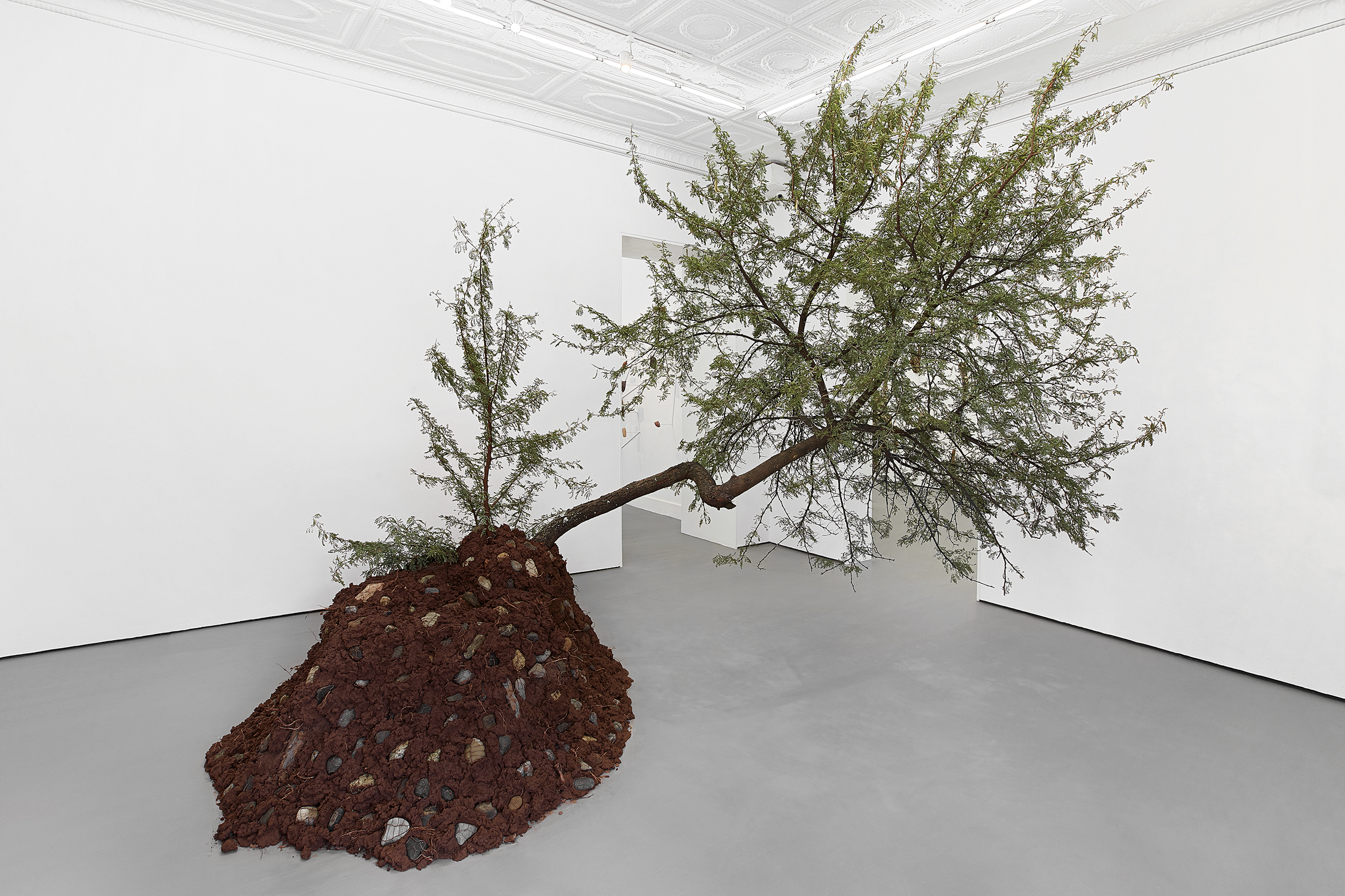 Bronwyn Katz oetes (Sweetness) 2024 Sweet thorn, copper, greywacke, sandstone, slate, Atlantic Ocean, quartz, rooigrond (red soil), dassiepis and sound, courtesy of Stevenson
Bronwyn Katz oetes (Sweetness) 2024 Sweet thorn, copper, greywacke, sandstone, slate, Atlantic Ocean, quartz, rooigrond (red soil), dassiepis and sound, courtesy of Stevenson
I recall with vivid clarity the morning of my youth, bathed in the big sun, bare feet on dusty roads, where we would etch our dreams and stories into the yielding soil. These ephemeral drawings, now understood as my earliest canvases, were the seeds of an enduring bond with the earth. My father, a humble landscaper and conjurer of verdant sanctuaries, fed us by breathing life into space. Every spring, we would transplant growing saplings from their confined cradles into larger vessels, a ritual of growth and nurturing that mirrored my own deepening relationship with the Earth.
As an artist, my engagement with soil has been both sporadic and profound, each interaction a meditation on the earth's raw, tactile essence. The first international group exhibition I ever curated was titled Misava, which is Tsonga for Earth. Travelling over the years, I have discerned a striking pattern, which I have often thought of dismissing as aesthetic acculturation: South African artists uniquely embrace soil, weaving it into their practice and praxis more expansively than I’ve seen their global counterparts. I stand to be proven otherwise. I believe this recurring motif is a testament to its profound resonance within the South African art canon. In late 2022, I was introduced to the term ‘GeoSemantics’. The term emerged during discussions on geological writings at the Latin American Environmental Humanities Platform in March 2022. The dialogue around the forum explores how geological elements—rocks, minerals, and fossils—are finding expression in diverse artistic forms and critical discourses. Observing the emergence of a fresh geological aesthetic rooted in the socio-ecological contexts of the Global South, the platform questions the frameworks through which established ideas about matter are understood.
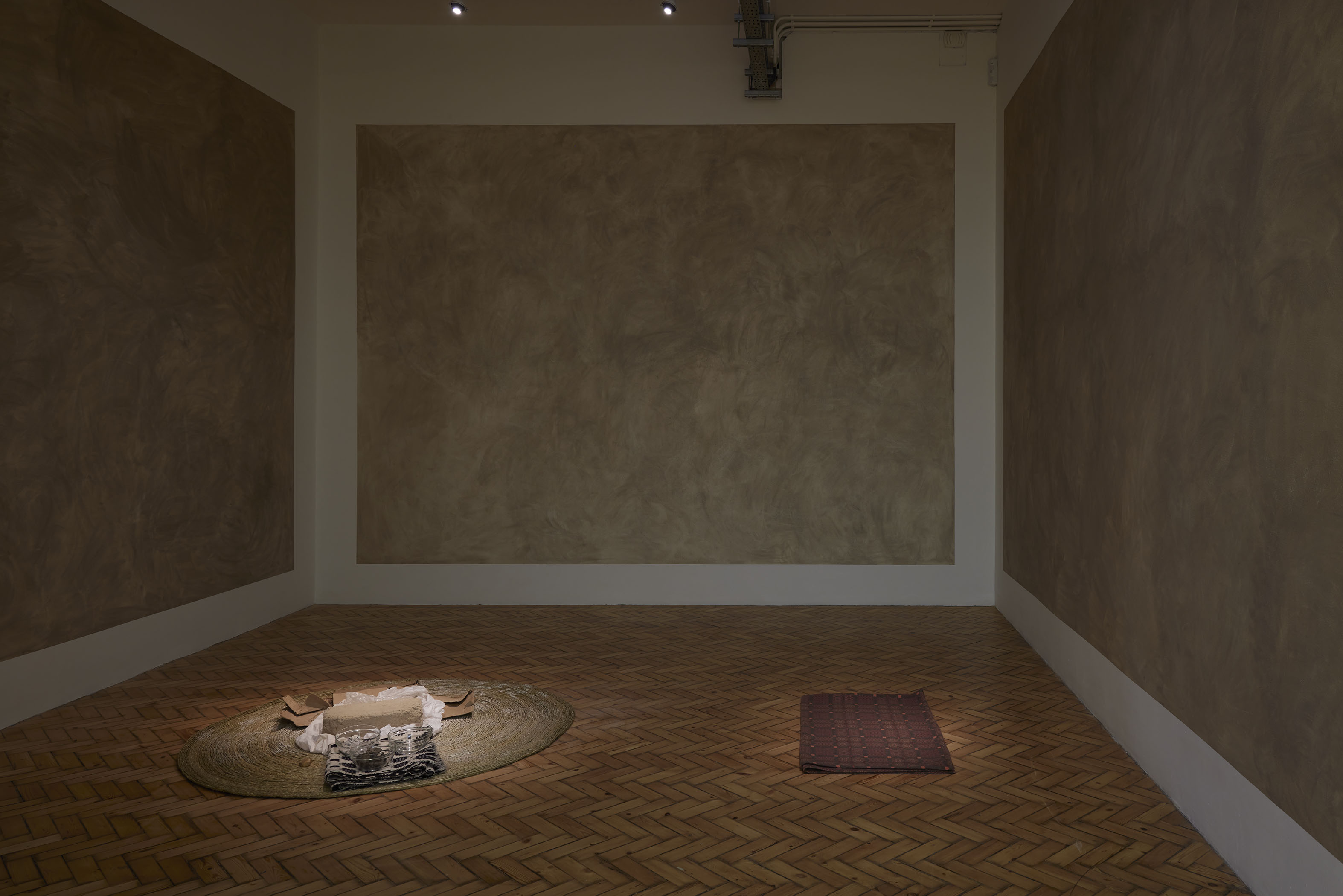 Dineo Seshee Bopape, (Nder brick) ... in process (Harmonic Conversions), 2020, Photography: Stuart Whipps
Dineo Seshee Bopape, (Nder brick) ... in process (Harmonic Conversions), 2020, Photography: Stuart Whipps
Central to the discourse were inquiries into the intersections of geological materials with art, colonial legacies, and climate justice. Could these geological urgencies forge new pathways in cultural inquiry? How might they prompt reconfigurations of our understanding of the world and its complex interconnections? These conversations aimed to unearth not only artistic possibilities but also deeper reflections on the ethical and political dimensions of geological presence and its implications for contemporary cultural and environmental discourse.
My first encounter with soil in art was through Moshekwa Langa's seminal ‘drag paintings’, first showcased in his exhibition Fugitive at Stevenson in August 2017. These monumental, unstretched canvases are suffused with the rusty, sanguine hues of Limpopo's leached laterite soil. Years later, I was captivated by Dineo Seshee Bopape's (Nder brick) --- in process (Harmonic Conversions), 2020, at the Fellbach Triennale. Bopape, also a native of Limpopo, frequently employs soil in her installations, sourcing it from disparate locales to construct vast, immersive environments. These contemplative spaces invite a profound engagement with the materiality and metaphysics of soil. In Bopape's hands, the earth is a medium and a message, a bridge between disparate geographies and histories. Her installations serve as visceral conduits to the essence of place, compelling viewers to confront the intricate web of identities and belongings etched into the earth beneath our feet. Here, soil becomes not merely a substance but a potent symbol of enduring spirit, bearing witness to the ceaseless cycles of adversity and transformation that define the human experience.
Over the years, I've witnessed a growing embrace of soil as a medium by a diverse cadre of artists near and far. Among them are Xhanti Zwelendaba's early explorations, Inga Somdyala's expansive installations and refined'smear’ canvases, or Nozuko Madokwe's ethereal layered canvases enriched with minerals, or more recently, Bronwyn Katz's installation Soetes, 2024 at her notably remarkable debut solo show at Stevenson titled Stone’s Envelope, a love spiral of erosion and renewal.
 Figure-5-1536x864_Lerato Shadi, stills of Motlhaba Wa Re Ke Namile, 2016. Single channel video projection with audio, 7 minutes 30 seconds. Courtesy of the artist and blank projects, Cape Town. © Lerato Shadi
Figure-5-1536x864_Lerato Shadi, stills of Motlhaba Wa Re Ke Namile, 2016. Single channel video projection with audio, 7 minutes 30 seconds. Courtesy of the artist and blank projects, Cape Town. © Lerato Shadi
My favourite video work involving soil is staged in Lotlhakane, nestled within the dry lands of Mahikeng, Northwest Province. Lerato Shadi's 2016 video "Motlhaba Wa Re Ke Namile" captures a profound narrative. Here, the act of ingesting soil serves as a stark evocation—a direct reference to the masks enforced upon enslaved Africans in America. These masks, designed to prevent suicide by soil consumption, symbolise the extreme measures taken to separate individuals from their ancestral ties.
Dispossessed of their native lands, enslaved Africans resorted to consuming soil in a poignant act of defiance against displacement. Shadi's portrayal mirrors this historical struggle, consuming red earth from her homeland with a blend of reluctance and determination. Each swallow is laden with significance, embodying a solemn reclamation of cultural heritage amidst tears and visceral discomfort. Her poignant performance echoes the enduring resonance of collective memory and the enduring struggle for identity and dignity.
It was during a recent visit to Cape Town that Fede’s Lebo Kekana’s collaborative group exhibition "iSenzo Sak'dala" at Reservoir brought up the idea of soil yet again. I’d describe the exhibition as a meditation on material methodologies and cultural legacies. Here, wood, soil, stone, and grass converge not as mere media but as vessels for ancestral wisdom, preserving indigenous knowledge systems.
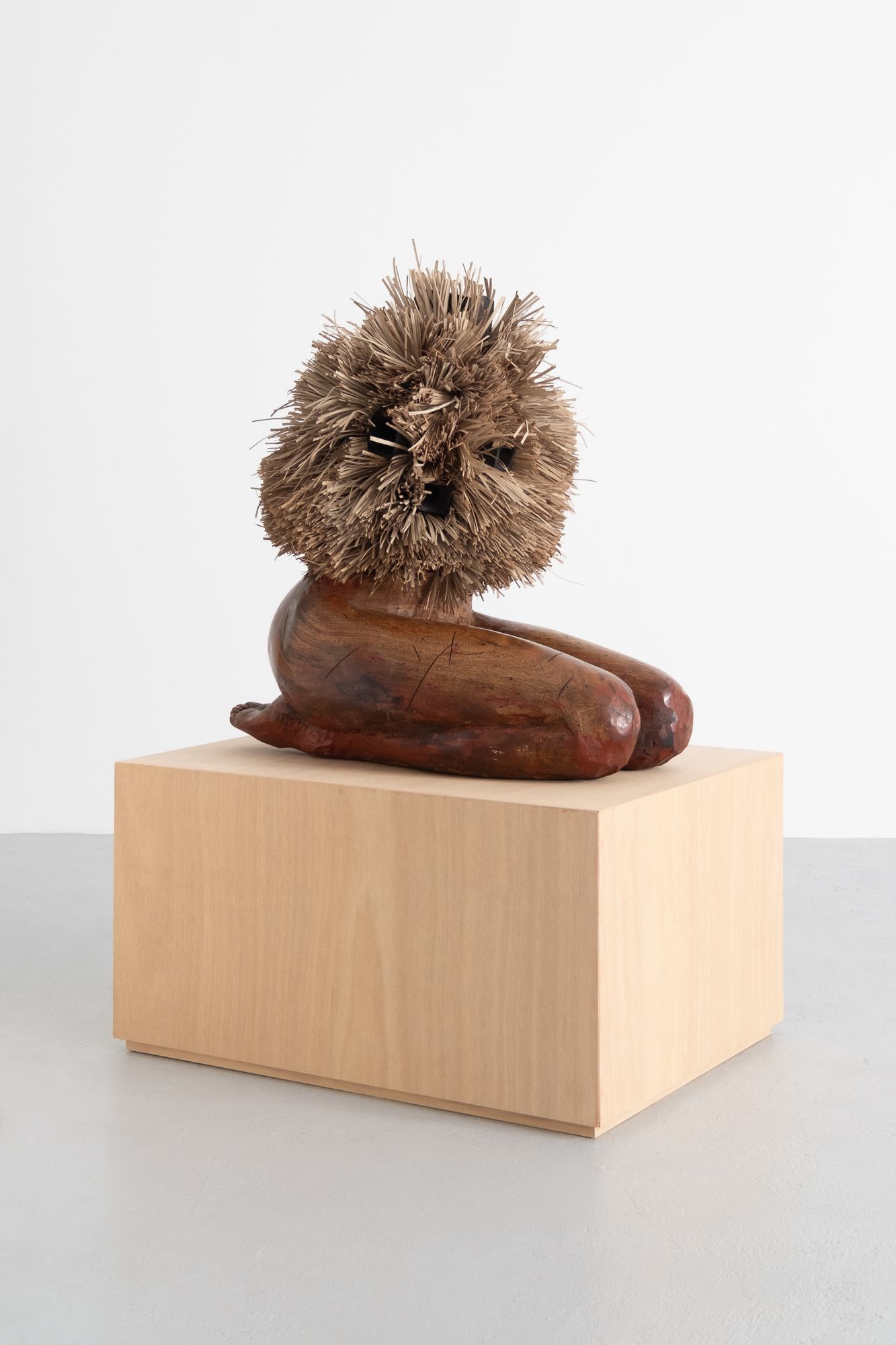
Luis M.S. Santos, On the soles of my feet, 2019, R70,000.00 excluding VAT, ENQUIRE
In this gathering, Seretse Moletsane's canvases stood out—for more reasons than I can mention here —specifically their materiality—primarily soil—casting vivid, soapy, fresh colours against the earth's grounded hues. There's a tender balance in Moletsane's work, where textures and colours, reminiscent of the vivid abstractions found in colour field painting, intertwine. Amidst these contemplations, Atang Tshikare's—another artist showing in this exhibition—ethereal soil plant sculptures surfaced in my mind—a testament to the exhibition's embrace of the organic, the tactile, and the enduring conversation between culture and nature.
But why does soil hold such sway in our local artistic lexicon? What binds the works of all these artists to their shared materiality? How do the local environment and landscape influence the artistic interpretation of soil as a medium? In what ways do artists navigate the balance between celebrating the earth's materiality and addressing environmental concerns in their work? How does the historical and cultural significance of soil in indigenous traditions shape contemporary artistic practices? What role does the tactile and sensory nature of soil play in conveying deeper meanings and emotions in artworks?
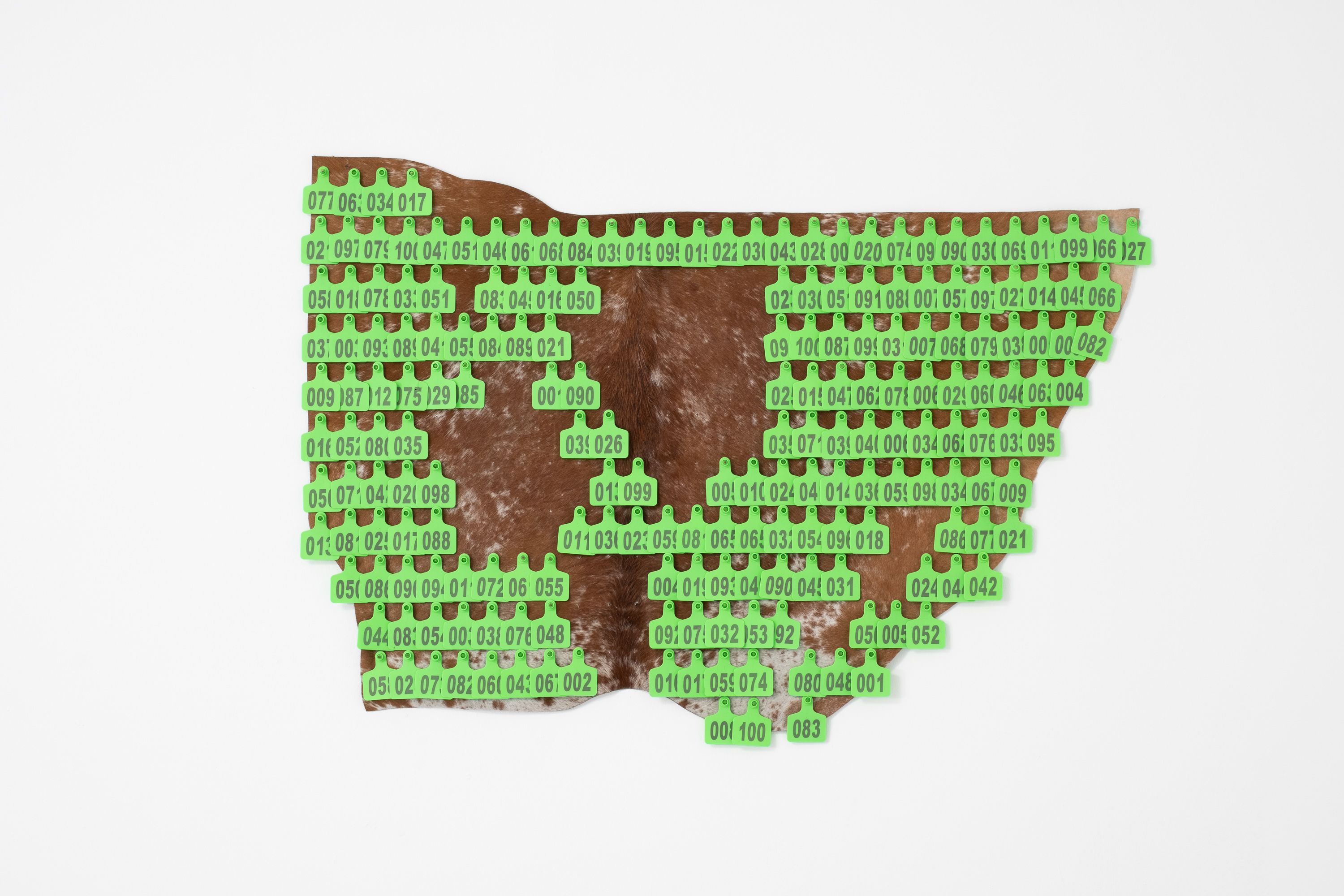 Benjamin Stanwix, Untitled, 2024, Price on request, R30,000.00 ex. VAT, ENQUIRE
Benjamin Stanwix, Untitled, 2024, Price on request, R30,000.00 ex. VAT, ENQUIRE
The answers lie in soil's symbolic gravitas and tangible power, its role as a custodian of memory, identity, and resistance. Soil is the primary entity on which all terrestrial life depends. 95% of all the food consumed by humans comes from soil. Soil and life have evolved together; one can’t exist without the other. With fresh memories of our grandmothers planting our placentas in the earth and other countless burials. In the context of South Africa, soil is more than matter; it is narrative, repository, and witness. It bears the long past of Mapungubwe and great Zimbabwe and the imprints of colonisation, dispossession, and apartheid, and echoes the ongoing struggles for land restitution and social justice.
For artists, soil can be a declaration of identity and rootedness. A medium through which they reclaim and reconfigure space and history. Soil is imbued with spiritual connotations, tied to ancestry, heritage, and the cyclical nature of life and death. Soil is not just a medium for growth; it is a conduit for the sacred. To touch its depths is to commune with the spirits that dwell within and to feel the heartbeat of the land itself. From its dark mysteries emerge stories of resilience and survival. In the metaphysics of African indigenous thought, soil is the silent oracle, speaking in the language of roots and leaves, inviting us to remember our interconnectedness with all living things.
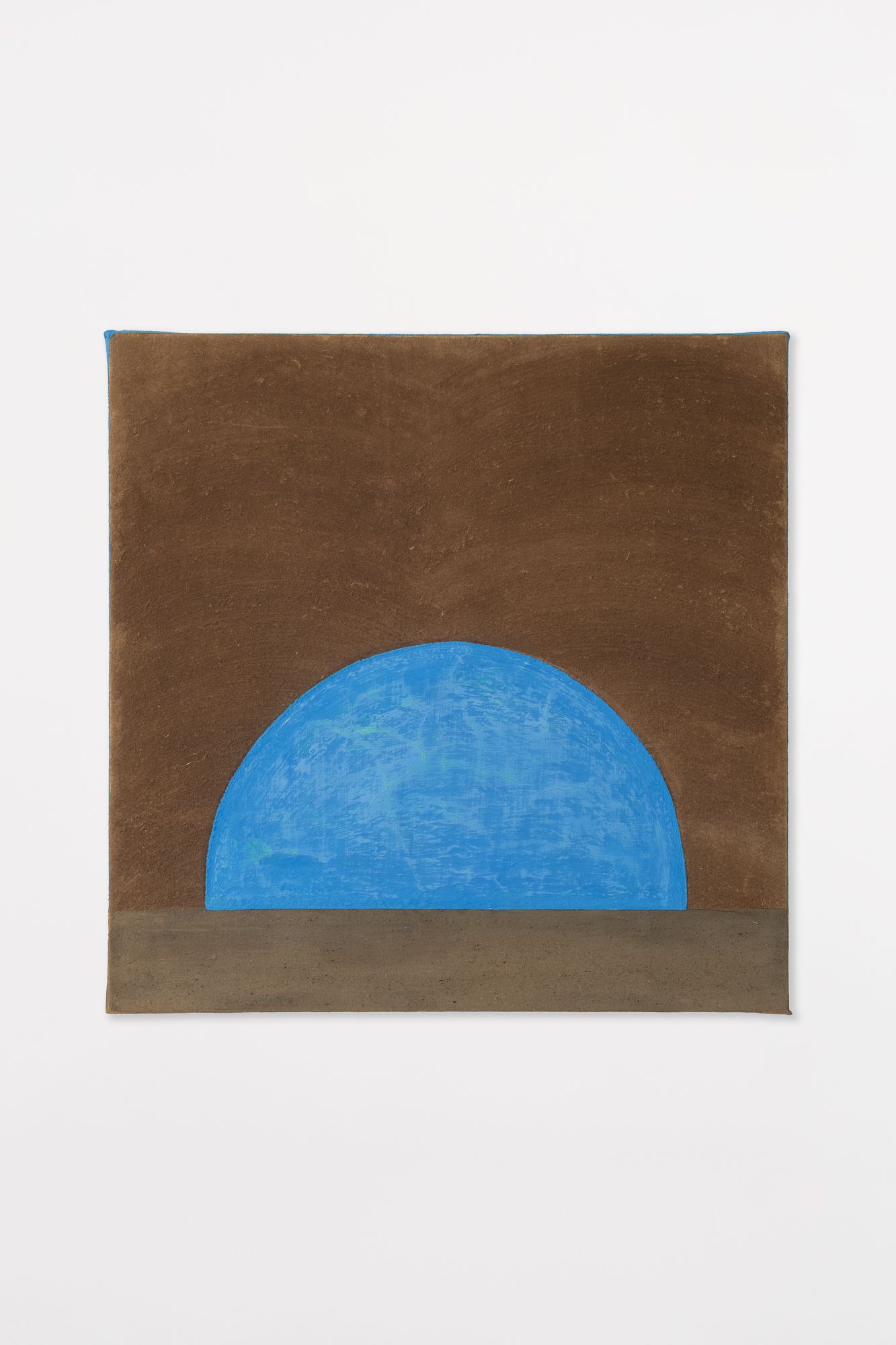
Seretse Moletsane, Kgoro, R48,000.00 ex. VAT, 2023, ENQUIRE
In art curation, artworks speak in tongues both ancient and contemporary, weaving narratives that transcend the temporal confines of gallery walls. They summon echoes of displacement, rootedness, diaspora, and return. Here, the act of creation using soil becomes a ritual of reclamation—a homage to the resilience of cultures intertwined with the earth's heartbeat. Through their art, these visionaries excavate buried truths, excavating buried truths, and unearthing buried truths.
This profound relationship with soil converges and intertwines with emergent art discourses that span food, art, and activism. It calls forth a dialogue on community nourishment, on the wisdom of plants, the secrets of seeds, the continued prevalence of extractivism across the African continent, and the ancient knowledge embedded within indigenous ethnobotany. Here, in the interstices of these themes, lies a fertile ground for exploration—a space where the tactile intimacy of soil becomes a catalyst for a deeper understanding of our connection to the earth and to each other.
The continued artistic engagement with this medium mirrors the intricate layers of the nation's history and the timeless significance of its landscapes. Through the medium of soil, artists weave narratives of connection, continuity, and transformation, inviting a deep reflection on our inherent ties to the land and to each other. These works evoke a profound awareness of our shared journey, encouraging us to envision a future rooted in memory and the perpetual renewal of creative expression.
Further Reading In Articles
African Artist Directory















